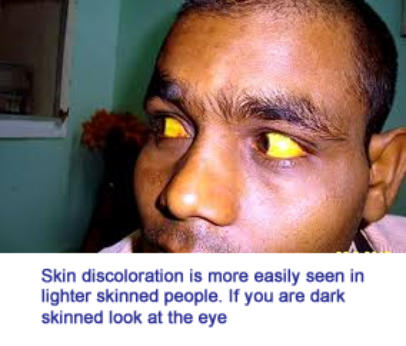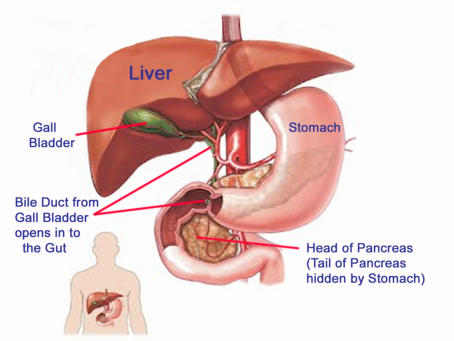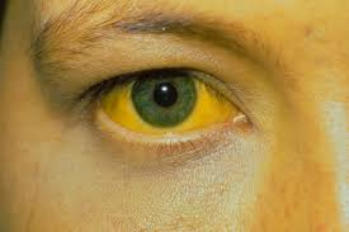

Information for the Public
What is Jaundice
Jaundice
refers
to
yellowish
discolouration
of
the
skin
and
eyes.
It
occurs
when
the
bilirubin
levels
in
the
blood
increase.
One
of
the
main
functions
of
the
liver
is
to
get
rid
of
toxins
whether
ingested
with
or
without
our
knowledge.
They
also
get
rid
of
waste
products
produced
by
the
body.
Bilirubin is one such product.
What is Bilirubin
Red
blood
cells
(RBC)
have
a
life
span
of
around
120
days.
Throughout
life
they
are
continuously
replaced.
During
the
recycling
process
the
old
and
damaged
RBCs
are
broken
down
and
bilirubin
is
an
end
product.
The
bilirubin
thus
formed
is
carried
in
the
bloodstream
to
the
liver
where
it
mixes
with
bile
in
a
process
called
conjugation.
This
conjugated
bilirubin
is
transported
with
the
bile
to
the
gut
where
it
is
degraded
further
and
eliminated
in
the
stools.
A
small
amount
is
also
excreted
in
the
urine.
Normally
the
level
of
bilirubin
in
the
blood
is
about
1.2
milligrams
per
deciliter
(mg/dL)
for
adults
and
about
1
mg/dL
for
children.
When the level in the blood rises to about 3 mg/dL the skin and eyes (conjunctiva) become yellow and jaundice results.
Significance of Jaundice:
If
your
bilirubin
levels
are
higher
than
normal,
it’s
a
sign
that
either
significantly
larger
number
of
red
blood
cells
are
breaking
down
or
that
your
liver
isn’t
functioning
properly
to
clear
the
bilirubin
from
your blood.
Another
reason
could
be
that
the
excretory
pathway
from
the
liver
is
being
blocked
so
no
bilirubin
is
conjugated
or
is
transported
by
bile to the gut.
Types of Jaundice:
•
Hemolytic jaundice
•
Hepatocellular jaundice
•
Obstructive or post-hepatic jaundice
Hemolytic jaundice
When
there
is
excessive
destruction
of
RBCs
haemolytic
jaundice
results.
This
can
happen
in
Sickle
cell
anaemia,
Thalassemia
and
certain drugs that can cause destruction of red blood cells.
Hepatocellular jaundice
In hepatocellular jaundice, the liver cells are affected hence conjugation of bilirubin is impaired.
The liver cells may be affected in:
•
Viral infections (Hepatitis A B and C)
•
Alcohol abuse
•
Cirrhosis of liver
•
Autoimmune liver disease
•
Gilbert syndrome
•
Drugs eg acetaminophen, non-steroidal anti-inflammatory drugs (NSAIDs)
•
Mushroom poisoning
Obstructive (Cholestatic) jaundice
In
obstructive
jaundice,
the
transport
of
bilirubin
to
the
intestines
is
affected
due
to
a
blockage
of
the
bile
ducts.
If
blockage
is
within
the
liver
it
is
termed
intrahepatic
cholestasis.
If
outside
(bile
duct)
it
is
termed
extrahepatic
Jaundice


